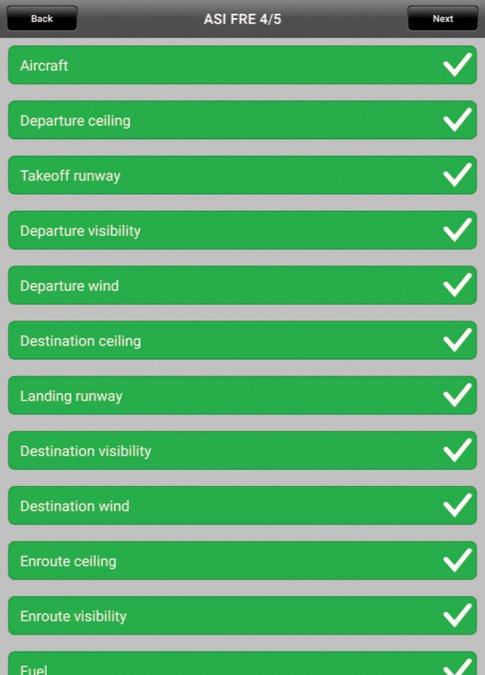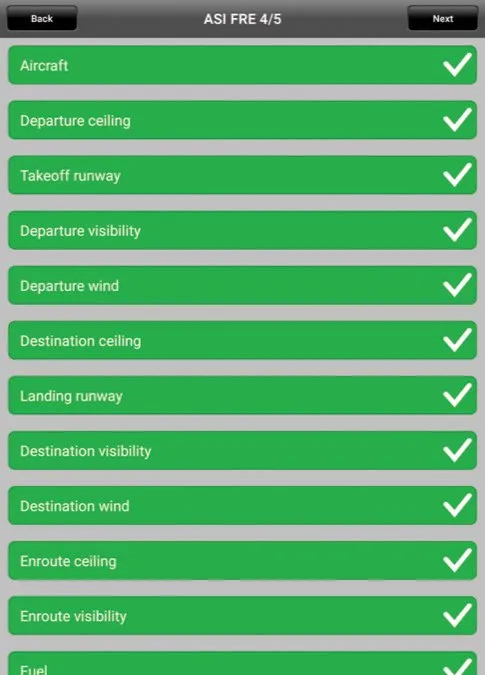I much appreciated Robert Wright’s May 2018 article, “Risk Assessment Tools.” We use a version of a flight risk assessment tool in our flying club, and while I agree that numerical values should not be the sole criteria for the go, no-go decision, the process does provide a checklist of sorts for decision-making. The most valuable risk assessment tool I use is not found on any web site or aviation app, but is the application of a simple philosophy: If I have to analyze a go, no-go decision for more than a few seconds, it is a sure sign that the risk requires serious mitigation or a willingness to stay safely on the ground.
David Fisichella
Falmouth, Mass.
We agree—if we have to think about the upcoming flight’s risk for more than a few seconds, there’s a problem. Often, there’s also an easy mitigation.
What About The Benefits?
Robert Wright’s article in May’s issue was excellent as usual. But it brings up a related point I believe should be brought before your readers. A common but disturbing theme has developed in aviation circles in which one of the most important subtopics is excluded from discussions of risk management. That would be benefit. We have forgotten half the equation in risk-benefit analysis.
For any contemplated activity, you should study, evaluate and understand the nature and extent of the associated risk. Then determine if the potential risk meets the gold standard: Is the risk commensurate with the reward? If the answer to that critical question is yes, then I believe the risk can be justified. Risk is not absolute, but can change with circumstances. Without understanding benefit, we have no way to evaluate what risks to avoid.
You may still choose not to take the risk, but at least you know that the option is viable. Just as risk management and elimination must be distinguished, so too must we never confuse risk management with risk avoidance; these are two entirely different approaches to life and to aviation.
Experts have developed elaborate charts to track and quantify risk. We have detailed analyses of personality types and how that impacts decision-making. Extensive statistics show what elements of flight lead most frequently to bad outcomes. We scrutinize every accident to glean important lessons for the future. All of that is necessary, but not nearly sufficient.

With every risk comes a potential payoff. Bending down to pick up a $100 bill you see on the sidewalk entails the risk of back injury or being run over by a Segway. Most would agree that in this case, the potential benefit greatly exceeds the risk. Flying low and doing loops to impress your date might have the benefit of an evening with a happy ending, but the risk in this case greatly exceeds the possible benefit.
Understanding risk without evaluating the potential benefit makes no sense. Risk should only be taken when the potential benefit clearly exceeds the risk, and that cannot be known if half the equation is excluded from analysis. Worse, when experts exclude benefit, they ignore what each of us is actually doing in the real world with almost every decision we make. As a consequence, risk analysis becomes a theoretical exercise for academics instead of one that we practically apply to our flying.
Let us stop talking about risk and start talking about risk-benefit.
Jeff Schweitzer
Spicewood, Texas
Good points. Of course, one benefit we have to consider is arriving alive, perhaps the next day. Look for additional thoughts on the opposite page.
Handling Lines
Regarding Mike Hart’s May 2018 piece on tiedowns (“Tiedown Tales”), there is one exception to the rule about not having anything attached to tiedown rings. Bush planes on skis routinely keep a long rope attached to the tail tiedown ring at all times (including during flight) so as to be able to maneuver the tail on the ground and turn the plane around on a dime, especially when operating in relatively deep snow and/or in tight spaces. The same applies to floatplanes, which often have lines at the wing tiedown points as well.
Morton Doran
Fairmont, B.C.




